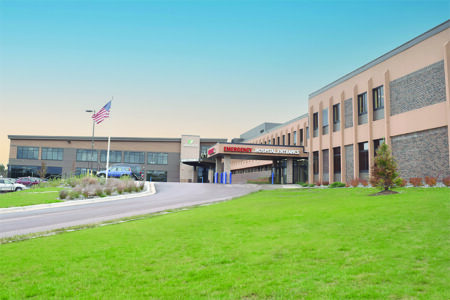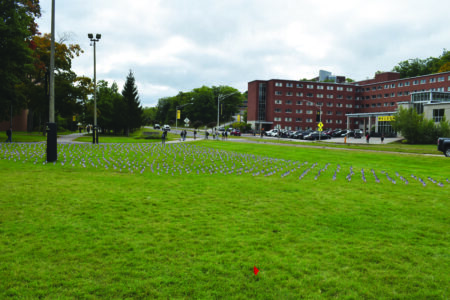Could the UP be a climate haven?
Water, land and workforce make convincing argument
Climate change?
No matter what your stand is, the world is growing in population and industrialization.
North America is experiencing raging wild fires, triple digit temperatures, epic droughts, rising coastal waters, severe storms – including hurricanes, tornados, and thunderstorms, along with many communities addressing an aging infrastructure.
Add to this list power outages, a recent global pandemic, and a current or pending lack of water or water quality. Just look at what occurred with water supply in Flint, Michigan and Jackson, Mississippi. In addition, the future looks bleak for Southwestern states. They rely on snowpack and the flowing Colorado river which feeds the arid regions significant agriculture focus and population growth.
Most recently Mexico City, a growing metropolitan region of 23 million, this summer is facing a hurdle of turning water lines off and on during designated periods. This regulated process already occurs in some American which already ban lawn watering and car washing.
The Facts
In 1980 the global statisticians of Worldometer listed the world’s population nearing 4.4 billion. When the 21st century arrived, the global population was in excess of 6.1 billion.
This past year the world’s population was close to 8 billion. By 2040 Worldometer and other population experts reveal the population will be over 9.2 billion.
Layered upon global population growth is the soaring industrialization and manufacturing in the Asian and African continents. In particular, growth within China, India, select African nations, and neighboring Central and South America.
Just read the manufacturing labels and literature on the products you purchase.
This equates to the swelling urban centers growth and massive needs within electrical and gas power, as well as water and sewer.
Then, there are also the factors of feeding, housing, delivering healthcare, transporting, and educating this growing populus.
What this Might Mean to the Great Lakes Region
The Great Lakes region has a long and storied history of fur trading, lumbering, agriculture, manufacturing, and producing power. The region offers the world’s largest concentration of fresh water – 21 percent to be specific. This does not take into account the inland lakes, rivers, and streams.
Should the Great Lakes region – more specifically, Michigan’s Upper Peninsula be prepared for a population shift? Become a “climate haven”?
Just look at what is occurring in Utah, Idaho, Montana and the Carolinas as West Coast and deep Southwestern residents are relocating to these states.
In the UP, the U.S. Census Bureau and Marquette-based Rural Insights noted the following counties have recently experienced population growth: Baraga, Keweenaw, Mackinac, Marquette, Ontonagon and Schoolcraft.
Ypsilanti based American Society of Adaptation Professionals (ASAP) is looking into climate change’s future implications. They see the Great Lakes as an attractive region with a relatively temperate climate, an abundance of fresh water, and people and cities who offer a history of innovation.
A Model City Prepares
Duluth, Minnesota and adjacent Superior, Wisconsin is a region with a population of over 290,000. The region offers attractive aspects, like a skilled population base, educational systems, health care, livable climate, sophisticated roadways and air systems, a deep-water port, and abundant fresh water.
Former Duluth Mayor Emily Larsen undertook a concentrated analysis and projected the region could be attractive for a possible shift of the nation’s population.
Working on this approach is Jesse Keenan, a scientist and architectural associate professor with Tulane University. He sees not just the metro Duluth but the entire Great Lakes region as a possibility.
In an interview with Bridge online magazine, Larsen stated in past years the region’s voters increased funding for roadways and infrastructure, as well parks and recreation.
U.S. Census Bureau data reveals in recent years metropolitan Duluth’s population has grown by nearly 12,000 residents.
Larsen and her review team comment that a region needs to prepare well in advance. This would include affordable housing for all income levels, a strong health care and educational structure, an infrastructure to address growth, retail and cultural amenities, various transportation levels, an environment to accept diversity at all levels, and a variety of numerous other important topics.
To maintain Duluth’s direction, the city has appointed Mindy Granley as Sustainability Officer. She has a strong alliance to the region having been in a similar role at the University of Minnesota’s Duluth campus.
YouTube offers a number of videos on Duluth’s direction and preparation.
Would the Upper Peninsula be attractive and ready?
Most likely at the top of the UP’s attribute list is; lots of water, land, great quality of life, and a populous willing to seek a prudent and well-designed growth process.
In a further look at the UP, the region offers strong educational systems, growing retail services, an expanding medical complex, diverse recreation and culture, roadway and bridge improvements, concentrated efforts to offer viable water and sewer services, quality public safety services, deep water ports, and regional airports which can take you across the globe from major Detroit, Chicago, and Minneapolis airports.
Coupled to these attributes are numerous UP organized and dedicated economic development leaderships, along with a work force who desires to serve.
However, challenges still abound in some UP regions with housing and health care along with other important areas.
Finally, Yoopers have a strong desire to respect the region’s natural resources, heritages, and traditions.
Jeffrey D. Brasie is a retired health care CEO. He frequently writes historic feature stories and op-eds for various Michigan newspapers. As a Vietnam-era veteran, he served in the U.S. Navy and U.S. Naval Reserve. He served on the public affairs staff of the secretary of the Navy. He grew up near the tip of the mitt and resides in suburban Detroit.




